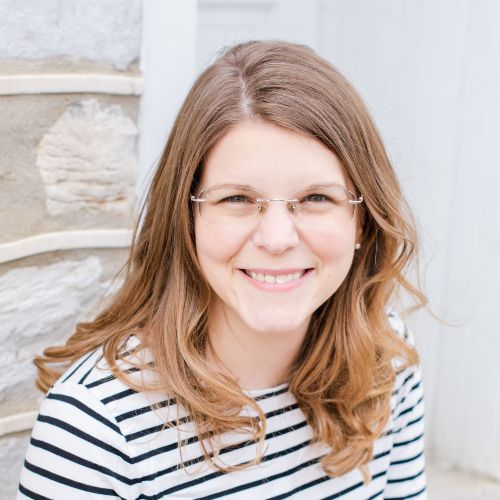Designing and setting up a classroom can be overwhelming and anxiety-inducing. Pinterest offers thousands of gorgeous picture-perfect classroom setup ideas that, when you look closely, may cost hundreds of dollars (which most teachers don’t have) and extra hours (which most teachers also don’t have) to execute.
Then there are other considerations like the physical limitations of your space, the needs of your student and school community, existing furniture and materials, and the constraints of school policies.
That’s why we’re offering classroom setup ideas to inspire you, not overwhelm you. Read on to get energized and prepared for the start of the school year!
Pro Tip for Saving on Supplies
It’s no secret that teachers often dip into their own wallets to buy supplies for their students and classrooms. It’s that level of selflessness and commitment to education that thousands of brands are eager to reward with discounts and cash back savings opportunities. As an ID.me member, you can find them all easily whenever you shop online using the ID.me Shop Chrome extension.
When you have the extension added to your Google Chrome browser, and you’re signed into your ID.me account, you’ll see a pop-up that alerts you instantly of savings from our partners. Not shopping with a Chrome browser? No problem! Just visit ID.me Shop to search for your favorite retailers.
4 Simple Classroom Setup Principles
As you plan your classroom, keep these principles in mind:
- Safety is paramount. Classrooms should be safe rooms for students. Depending on the age of your students, that might mean covering outlets and keeping sharp and heavy items out of reach. It also might mean having a plan for how to keep the room clutter-free.
- Go for flexible. Create spaces in your room that can be used in multiple ways. Classroom libraries can also be used as cool-down areas; tables and desks can be grouped and regrouped for projects; windowsills can hold prized student work and therapy plants.
- Pretty is nice, but it’s not necessary. If you have a head for design, it’s easy to feel that your classroom must be picture-perfect and color-coordinated. Just remember: it’s much more important for your classroom to be functional and work for your class than it is to have extra bells and whistles or perfectly matching accouterments.
- Mix and match. We’ve categorized these ideas by grade level, but you can modify them to fit your situation no matter the age of your students!
Pre-K, Kindergarten, and Elementary Classroom Setup Ideas

- Create a sanitation station by filling a caddy with antibacterial wipes, a child-safe hand sanitizer, and paper towels. Depending on your needs, you could have one for each adult classroom helper to keep with them. Or locate them near zones where the supplies are most needed.
- Choose your displays carefully by planning exactly what you need versus what you’d like to display first.
- Get creative with your bulletin board space. You may not have enough corkboard for all of the things you’d like to post, so think about using hanging display pockets, magnets, and Velcro or 3M strips to create displays on your windows, shades, doors, and other surfaces.
- Make it homey. Peel-and-stick wallpaper, floor tiles, or backsplashes are relatively inexpensive and temporary ways to hide ugly marks and stains you inherited from past classes.
- Teaching all of the subjects? Consider zoning your classroom so that each subject has a physical presence in your room.
- Use multi-drawer teacher carts to organize subjects, routines, parts of your day, or days of the week. You can wheel them to wherever you need them.
- Go up. Clotheslines, bungee cords, plastic chains, and clothespins are simple but effective ways to display (and change) student work and/or learning aids easily.
More Like This
Discover the best teacher discounts from your favorite brands with savings up to 50% off!
Middle School and High School Classroom Setup Ideas

- Move your desk to the back of the room. It will give the front of the room more space and offer a little bit of privacy for students who want to meet with you one-on-one.
- Big kids and teens like area rugs, too! If you have space, a small classroom library, chill zone, or workspace can offer a little bit of unstructured respite to students.
- Middle and high schoolers still need structure. Create spaces where routines can “live” in your classroom — especially for the routines that begin and end your class.
- Create a brag wall for your students that doesn’t include academic work. Celebrate accomplishments in extracurriculars, after-school jobs, and moments of kindness you witness.
- Design a space that shares your life with your students. Think about including pictures of former classes, your favorites (like books, movies, quotes, music, and sports), a memento of your alma mater, and pictures of your family. Get super creative and include QR codes to some of those favorites— like the library’s borrowing page for your favorite book.
Don’t forget: if your classroom setup just isn’t working, you can change it! There are points throughout the year (like holiday breaks) that could make a switch-up feel natural. But you don’t have to wait — make an adjustment and experiment with your new layout!

Joanna Guldin-Noll spent years teaching at a Baltimore high school, pioneering the school’s first AP English Language and Composition course, garnering thousands in grants for her students, and teaching American Literature, honors, and recovery courses. With a Master’s in Secondary English Education from Johns Hopkins, she was an adjunct faculty member and portfolio coach for the School of Education’s master’s program and served as a consultant for educational start-ups. She lives in Pennsylvania with her husband John and her puppy Albus.



